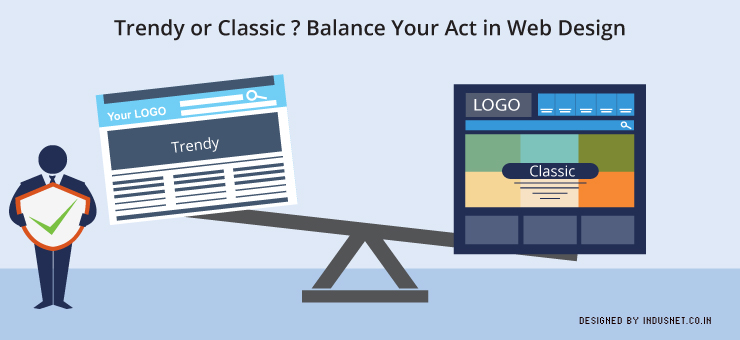
Trendy or Classic? Balance Your Act in Web Design
When it comes to web designing, one has to always remember that appearances matter a lot. People like to see something that is pleasing, well put together and clean to look at. This implies one has to use the right color combination, design and typography. As with everything else, some people choose to use elegant and classic designs, while others use trendy designs. We need to understand the differences between trendy and classic before deciding on anything. Something that is trendy is fleeting and lasts only for a while. It can create a buzz and can attract a lot of attention but will be forgotten in the sands of time. A design that is classic but elegant remains relevant for a long time and will be attractive too. It might not create a buzz in the circle but it will certainly not drive away anyone. Choosing between trendy and classic So, when it comes to web design, how do we decide if we must remain trendy or classic? The answer seems to be embedded in what you really want out of your website. If you are looking at a short term goal that will create a buzz, you might want to choose a trendy design. However, if you want to build trust and prove to the world that you are a stable business, you might want a classic and elegant design. In this article, let us take a look at when to choose trendy and classic designs while developing websites. We have listed a few scenarios and we shall discuss them briefly: Your business website and blog A business website has to be serious and must build trust among visitors. People should be able to take a look at your website and not be surprised or shocked by anything that they see. The website should conform to corporate standards and ensure that people associate your website with reliability & trust. Similarly, a blog has to be simple and trustworthy too. In such a scenario, a classic and elegant design wins over trendy web design styles. Landing pages for products and services Product launches and service related landing pages tend to be temporary. They also should gain a high number of visitors so that they take action. Landing pages need to be designed in such a manner that people are compelled to take action. People, usually, take action when they are urged to and when something compels them to take action. A landing page can, thus, be trendy and ephemeral. It helps when a landing page is attractive, flashy yet simple. It might go out of fashion in a few months but your landing page need to be changed often. Thus, you can take the risk of designing trendy landing pages. Specific audiences Certain audiences prefer certain kinds of design styles. A hipster will not like a classic corporate blog as that might seem very uncreative. For a hipster, something that is creative and artistic might appeal more. Creative and artistic web designing need not be trendy. They can be classic too. If you have art and creativity in your mind, tend to use a retro design inspired by major artists like Andy Warhol or Picasso. That will not only attract hipsters but also help you build respect and trust among older generations. Business websites do not have to be conformist in order to be classic. Classic can be creative and artistic, if it employs high brow topics. Duration of the page’s existence A page that has lasted for a long time needs to be left that way without making major changes. That can alienate previous users. Older websites which look outdated can always be revamped and rejuvenated but not at the cost of alienating users. Certain older websites are expected to look in a way and that can only happen when you hold on to previous design themes. Instead of making radical changes, try to stick to what you previously had and improve the look for a contemporary audience. Speaking to a professional web design agency might help you to understand the importance of rejuvenating old and outdated websites. No matter what you choose to do, make sure that you do not shock your web visitors. A website needs to always gain trust and look trustworthy. For that to happen, your website needs to be more classy than trendy.
